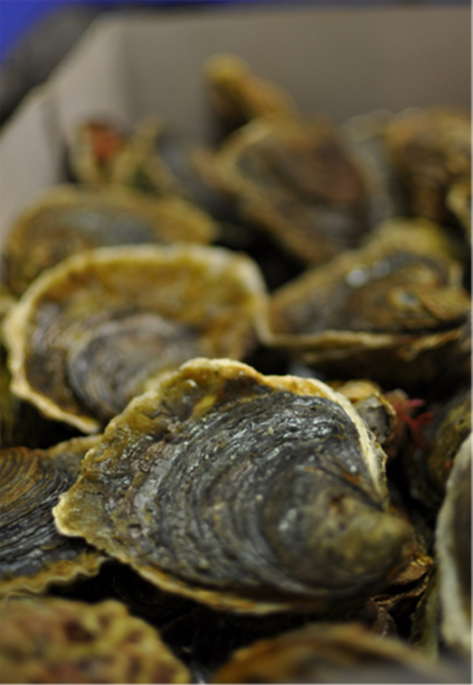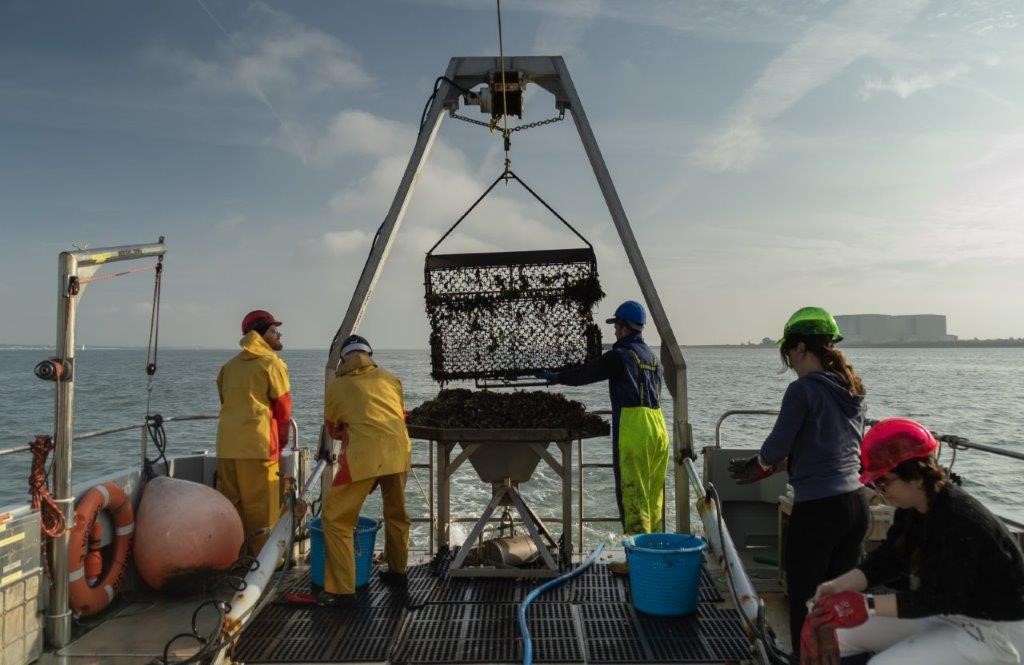01843 585310
info@kentandessex-ifca.gov.uk

01843 585310
info@kentandessex-ifca.gov.uk
 Native oyster (Ostrea edulis) Research
Native oyster (Ostrea edulis) ResearchThe Native oyster is an important part of the cultural heritage of coastal communities in Essex with the cultivation and fishing of the bivalve dating back to Roman times. However, stocks across Europe have declined due to a number of pressures including disease, pollution, over fishing and invasive species. Today, native oyster populations are at only 5% of historic levels.
In 2013 the Blackwater, Crouch, Roach and Colne Estuaries MCZ was designated to protect and recover native oyster populations and native oyster beds (habitat) within the site.
To gather a greater understanding of the native oyster and help inform appropriate management measures Kent and Essex IFCA co-funded and supervised a PhD focused on native oyster regeneration at the University of Essex. The research completed by the appointed PhD candidate, Alice Lown, has helped KEIFCA to address significant knowledge gaps and has helped to develop the BCRC Native Oyster Fishery Flexible Permit Byelaw and its associated oyster management and recovery plan.
Over a 5-year period between 2014 to 2018 KEIFCA supported PhD fieldwork to conduct spring and autumn surveys of native oysters within the BCRC MCZ.
Each survey comprised of dredging at 94 different sites within the MCZ to assess native oyster stocks. In addition to native oyster data, data was collected on other species present in the dredge samples, along with data on substrate type and availability of cultch to help develop our understanding of the supporting habitats of the native oyster.
Native oyster stocks in the MCZ are currently below the level required to allow for a public native oyster fishery. As part of the PhD, Alice conducted growth experiments on native oysters in different locations around the MCZ. These experiments consisted of strings of native oysters which were measured 4 times over the course of a year and allowed data to be collected for the growth rates and mortality rates of oysters across the MCZ. The data from the growth rate experiments has been used by Alice to develop a computer model to enable predictions to be made about the future of the native oyster stocks within the MCZ. This model has arisen from a joint project between KEIFCA and Natural England.
The data from these native oyster surveys contributes to the long-term trends in native oyster stocks and is an extremely valuable component for the management of native oysters and the BCRC MCZ Native Oyster Fishery Flexible Permit Byelaw.
KEIFCA continues to complete an annual survey of the known oyster sites within the MCZ to inform management. Every four years a full survey of the MCZ is conducted to identify new native oyster beds which are then added to the annual oyster bed surveys.


KEIFCA are a part of the Essex Native Oyster Restoration Initiative (ENORI) - a collaboration between oystermen, academia, conservationists and the Government to restore native oyster populations in the Essex estuaries. To help restore native oysters within the site ENORI are:
Essex Native Oyster Restoration Initiative
Find out more about the Native Oyster Fishery Flexible Permit Byelaw
© Kent & Essex IFCA 2026 - All Rights Reserved | Privacy Policy